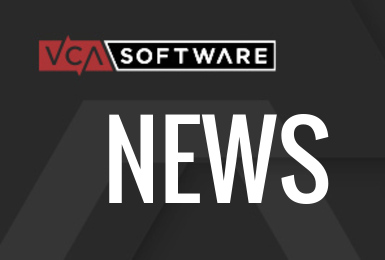The insurance industry in general – and the claims sector in particular – is experiencing a talent crunch. Experienced workers are retiring in droves, and attracting new talent has been difficult. According to BLS data, the insurance industry could lose 400,000 workers by 2026. Maintaining smooth operations in the face of these insurance claims talent challenges will require decisive action in 2025.
Creating a Talent Pipeline
Chronic understaffing causes a downward spiral. When there isn’t enough talent to handle workloads, everyone becomes overworked, which may lead to stress and burnout. This, in turn, hurts retention, contributing to even greater understaffing.
IA firms can avoid these challenges by creating a talent pipeline and keeping it full.
- Make your company attractive to modern job seekers. GenZ and Millennial job candidates prefer to work for companies that are tech-forward and equip their workers with modern tools according to CIO Dive. If you equip your file handlers with cutting edge technology, make sure to promote it in your job ads. Once candidates learn about the benefits of the claims profession – including a good salary, efficient processes and fulfilling duties centered on problem-solving – they may become more interested in an insurance career. Make sure your total compensation package includes the perks that Gen Z and Millennials consider to be important, which may include flexible work schedules, mental health benefits, caregiving leave, and professional development according to The Difference Card.
- Update your job ads. Don’t just copy and paste a 10-year-old job description into your job posting. Write your job ads with the same care you would take to create a marketing campaign. Ads should convey your company culture and clearly communicate the many advantages of working for your company. With the rise of pay transparency laws, you may need to include pay range and benefits information. Even if this is not a requirement where you are, job seekers may expect it. The qualifications you list are also important: listing necessary qualifications helps you avoid unqualified candidates, but listing qualifications that aren’t necessary may deter excellent candidates from applying.
- Don’t wait until the ship is sinking. Hiring and training quality file handlers takes time. If IA firms only think about hiring when they have a position they need to fill urgently, they may fall into a reactive position where they’re constantly putting out fires. A better option is to plan ahead by assessing current and anticipating future staffing needs. Just as you are always filling your new business pipeline, you should always be cultivating your talent pipeline.
- Round out your recruitment strategy. In addition to job ads, you may need to explore other recruitment options. IA firms may be able to attract job seekers who might not be thinking about claim jobs by participating in job fairs, partnering with local college career centers and offering internships. You may also want to build a relationship with a recruitment agency. Word of mouth is another great option. If your current workers are happy in their positions, they will likely let other people know about the company. Consider establishing an employee referral program.
Preparing Your New Team Members for Success
If employee turnover is high, you’ll have a hard time maintaining a skilled workforce, no matter how much effort you put into recruitment and hiring. Although some workers quit because they are relocating or looking for higher pay, others quit because they feel burned out and undervalued. IA firms can boost retention by giving workers the resources they need to succeed.
- Training. New hires will need training on company processes, even if they have experience. However, training isn’t just for new workers – long-term workers may also benefit from continued training and job development. This is especially applicable right now, as technological advancements are causing many workers to fear that they will become irrelevant.
- Managing. The common refrain is that people quit managers, not jobs. Your managers and management style play a key role in worker engagement and employee satisfaction. If your turnover is high, it may be time to consider whether your management style is toxic. HubSpot outlines 10 management styles to help you identify yours.
- Culture. Workplace culture includes (but also goes beyond) management. Do you recognize and support workers? Do you give them constructive feedback and opportunities to grow professionally? Do they have reasonable workloads and a work–life balance?
- Technology. Although some workers may be afraid of being replaced by AI, the right IA technology will make their jobs easier and more fulfilling. The key is to find tools that reduce the amount of tedious busywork to enable file handlers to instead focus on more impactful tasks while also increasing excitement to get everyone on board.
VCA’s claims management platform helps IA firms solve insurance claims talent challenges in two ways. First, the tool leverages automation, which enables teams to do more in less time. Second, the system is user friendly for new hires and experienced claims professionals alike, which creates an enjoyable, frustration-free working experience.




